It feels like we’ve all been having a very up-and-down relationship with dining rooms. At first, a formal space was a must-have feature, then casual dining in the kitchen was most stylish, and now, a blend of the two is the most fashionable.
And as dining room ideas have changed, evolved, and become more multi-functional spaces, there are a few features and design decisions widely considered clichés – they are out of style and outdated.
The dining room might not be the highest-traffic space in your home, but it gets plenty of stage time during the hosting season and is often one of the rooms your guests see most. That’s why it’s key for this area to look timeless yet on-trend, functional yet aesthetic, relaxed but still occasion-ready.
So what are the dining room clichés designers warn will make your space look dated in 2025 and beyond?
1. Banquettes in Formal Dining Rooms
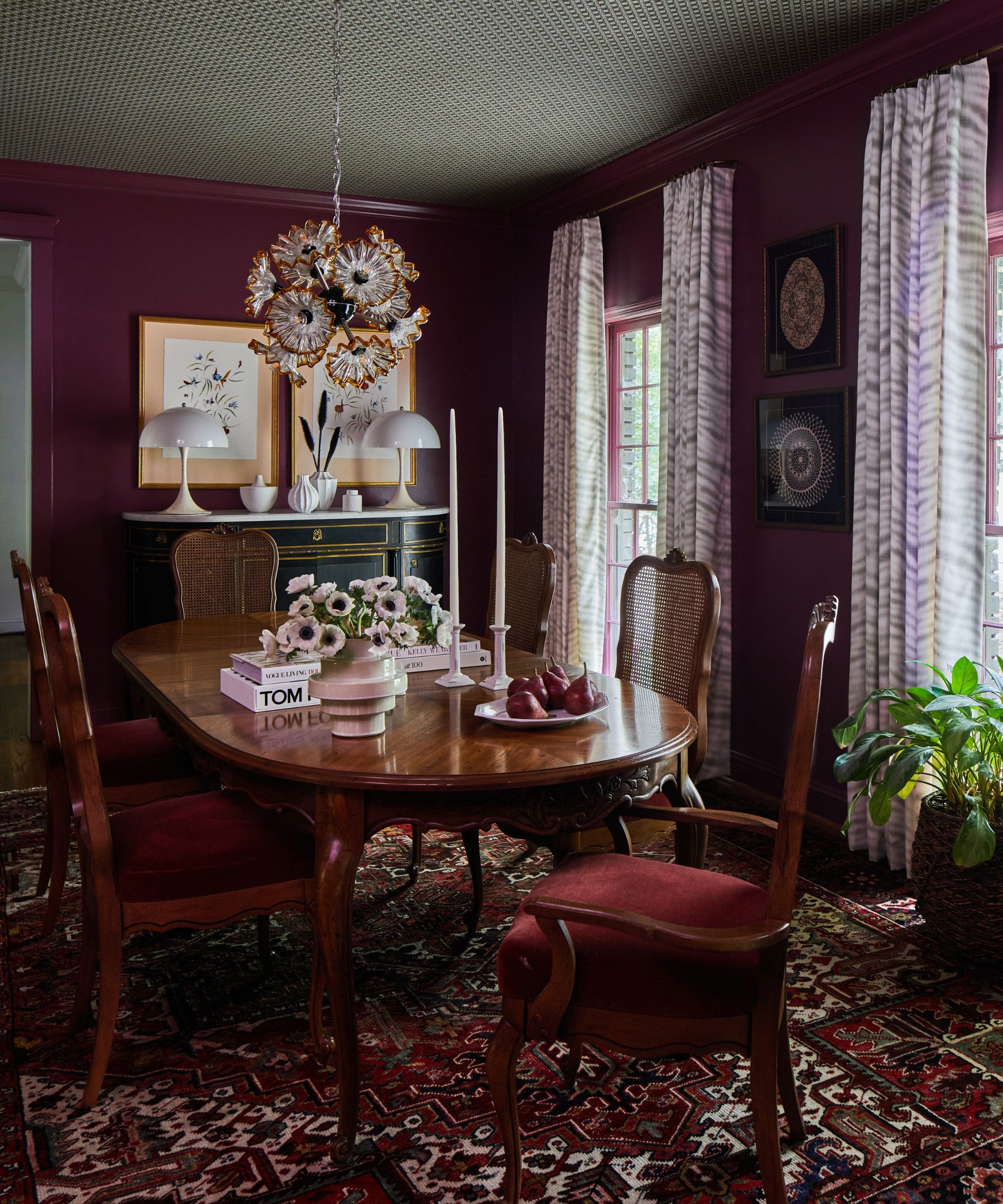
In this dining room, vintage chairs have been styled around the table to maintain the formal look, while adding plenty of comfort.
(Image credit: Ellie Christopher)
It’s fair to say we’ve all become slightly obsessed with banquette seating. It feels a bit cooler, comfier, and adds additional storage, which is always a bonus. But in a formal dining room, designers say it feels misplaced.
‘Banquettes in formal dining rooms are losing steam. They look great in photos but rarely work in real life, especially when guests are climbing in and out during a dinner party,’ says interior designer Ellie Christopher.
‘Fully upholstered dining chairs are making a comeback. They add softness, texture, and a sense of ease. I also love the idea of giving heirloom pieces a modern update: slipcovered dining chairs in linen or cotton instantly tone down the formality and feel fresh again,’ she explains.
Reupholstering an inherited or vintage chair is a great way to modernize antique furniture and give it a more unique look that feels tailored to your style and lifestyle. And the fabric you choose is key.
‘For families, laminated or wipeable fabrics like leather keep things beautiful and livable. The goal now is a dining space that’s elegant but approachable – somewhere people actually want to linger.’
If you want something timeless and comfy, the Threshold™ Ingleside Open Back Upholstered Wood Frame Dining Chair from Target is a great choice, or for something a little bolder, Lulu and Georgia’s Haddan Slipcover Dining Arm Chair is fully upholstered with a range of fabric patterns and colors to choose from.
2. Oversized Chandeliers
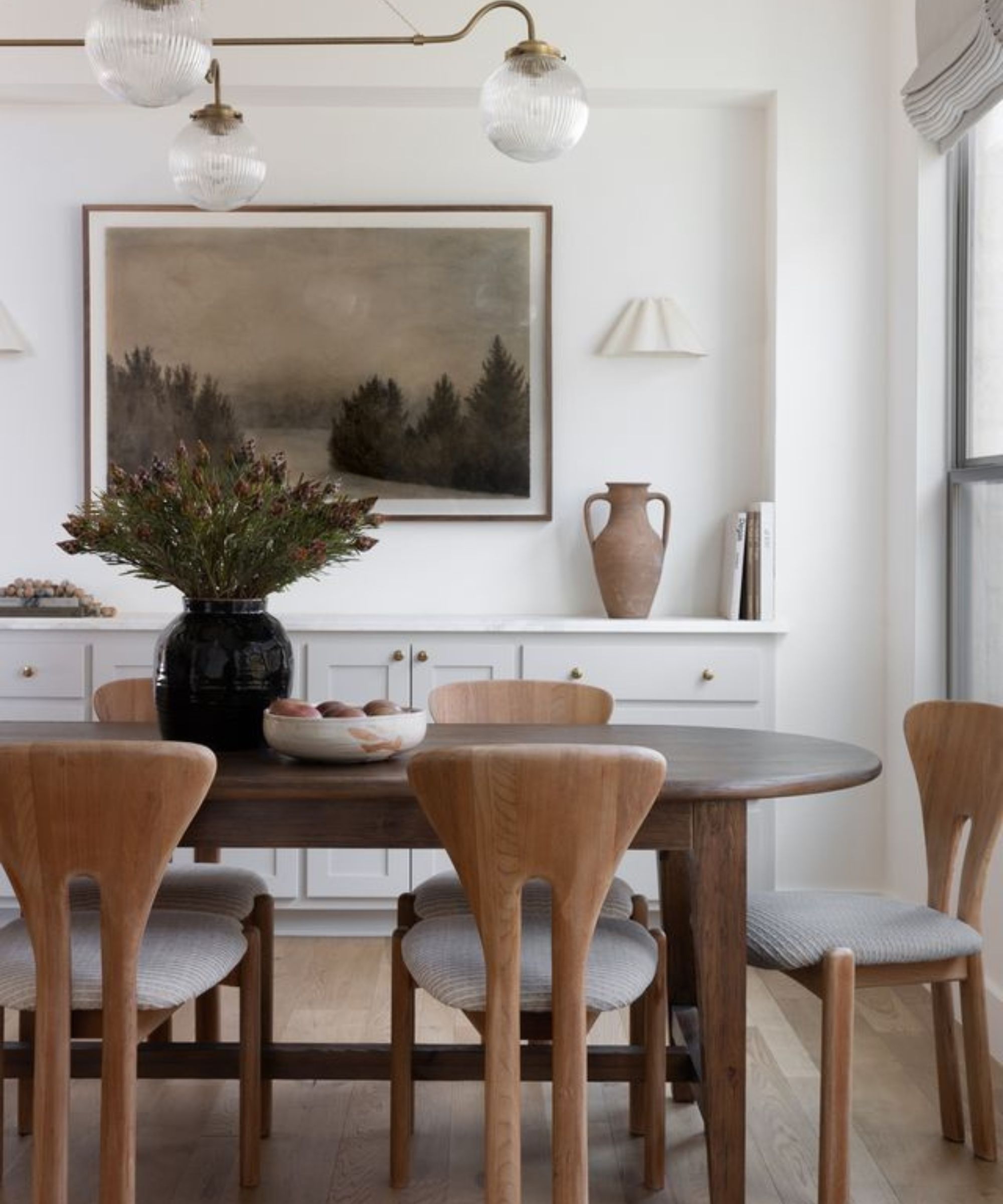
For a more refreshed look, the designer has opted for a modern lighting fixture that feels somewhere between a pendant and a chandelier for a chicer look.
(Image credit: Audrey Scheck Designs)
In years past, no formal dining room was complete without a beautiful lighting fixture – usually a grand chandelier. It created a sense of decadence and status that made the dining room feel more formal. But it’s a look designers are gravitating towards less and less.
‘Large and heavy chandeliers are on their way out for dining rooms. The days of having a chandelier with dripping crystals to create a very formal look in a dining room aren’t what people are looking for now,’ says Yena Jung, of By Yena Designs.
Something more unexpected and contemporary in style can create a beautiful design feature that feels far from dated. This Curie Polished Champagne Chandelier from CB2 is a perfect example of a modern interpretation of a chandelier, or for something more subtle and soft, Bruck Lighting’s Federica Pendant from Wayfair is so chic.
‘Many formal dining rooms are being turned into completely new spaces like play rooms, laundry rooms, but more commonly, dining rooms are being combined with semi-open concept kitchens. You don’t need statement kitchen pendant lights and a heavy dining room chandelier in a combined space,’ she explains.
In fact, open plan spaces can instantly feel overwhelmed with too many statement lighting features, and can take your dining space from elevated and luxurious to completely overwhelmed. So, instead of embracing the traditional, oversized designs, Yena recommends choosing more unique designs.
‘I’m using more artistic chandeliers that are asymmetrical and odd-shaped. I’ve also been adding color to the light fixtures, where traditionally you only ever saw glass, black, white, silver, and gold. Light fixtures bring warmth to a room, but doing a fixture in a dark mulberry color or aged bronze brings another dimension and something more interesting to look at besides too many hanging crystals.’
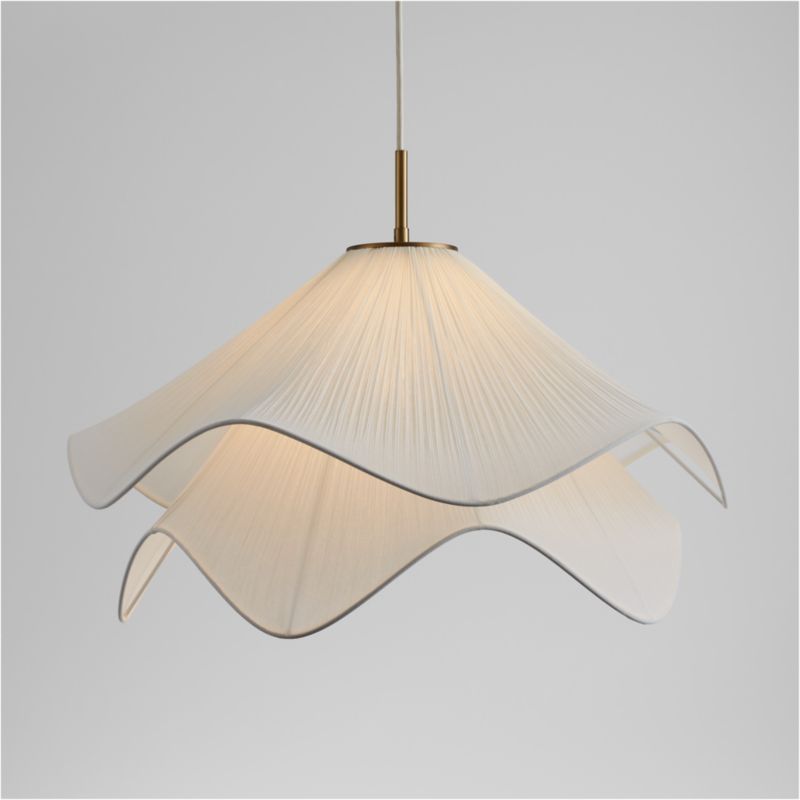
Crate & Barrel
Lia Pendant Light With Shade
If you prefer to stay away from chandeliers but still like statement lighting, this pendant light is a stylish option, created using layers of pleated ivory faux silk.
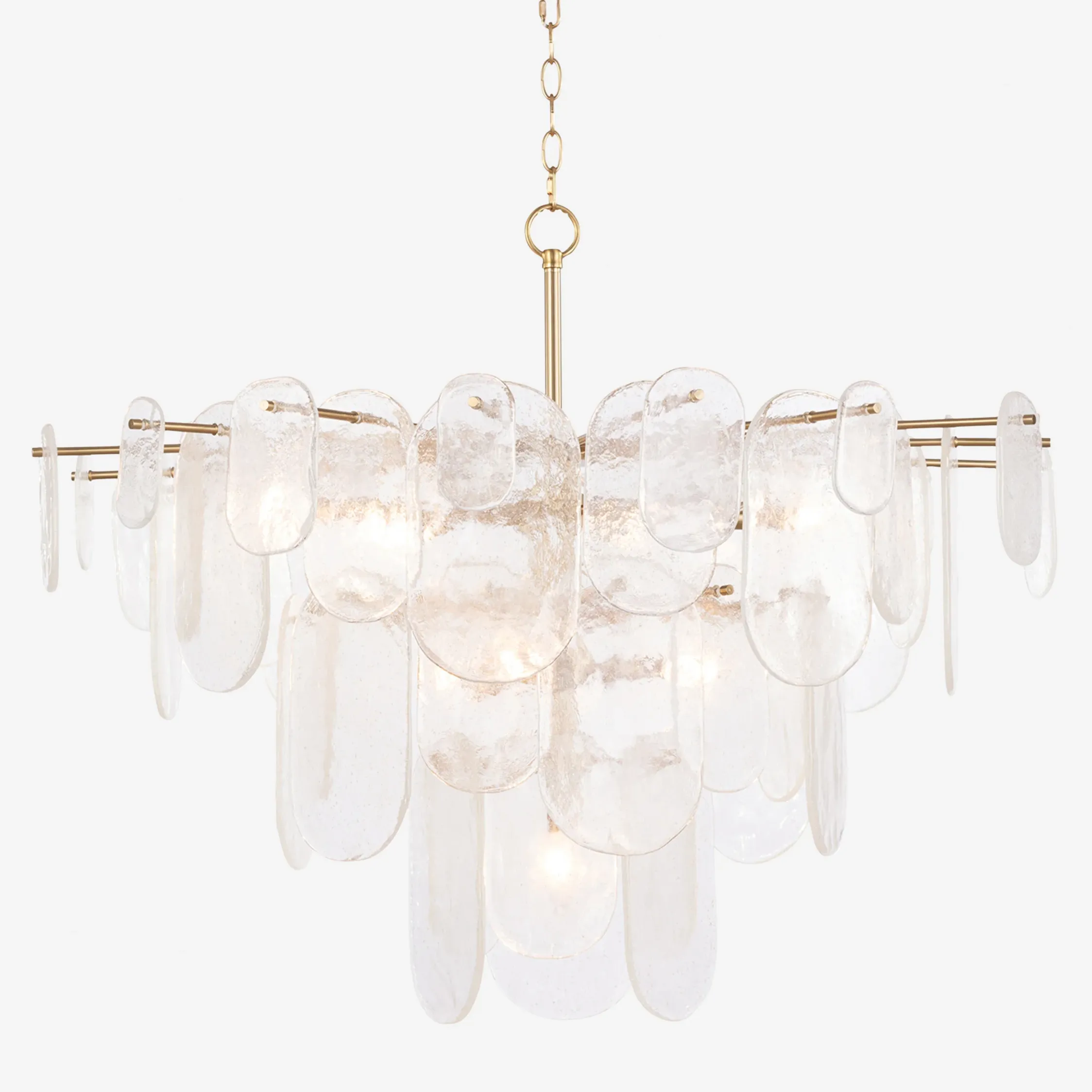
Lulu and Georgia
Echo Chandelier by Regina Andrew
For a contemporary take on a chandelier, this textured glass design is the chicest way to do it. It has texture and drama without feeling overly grand or outdated.
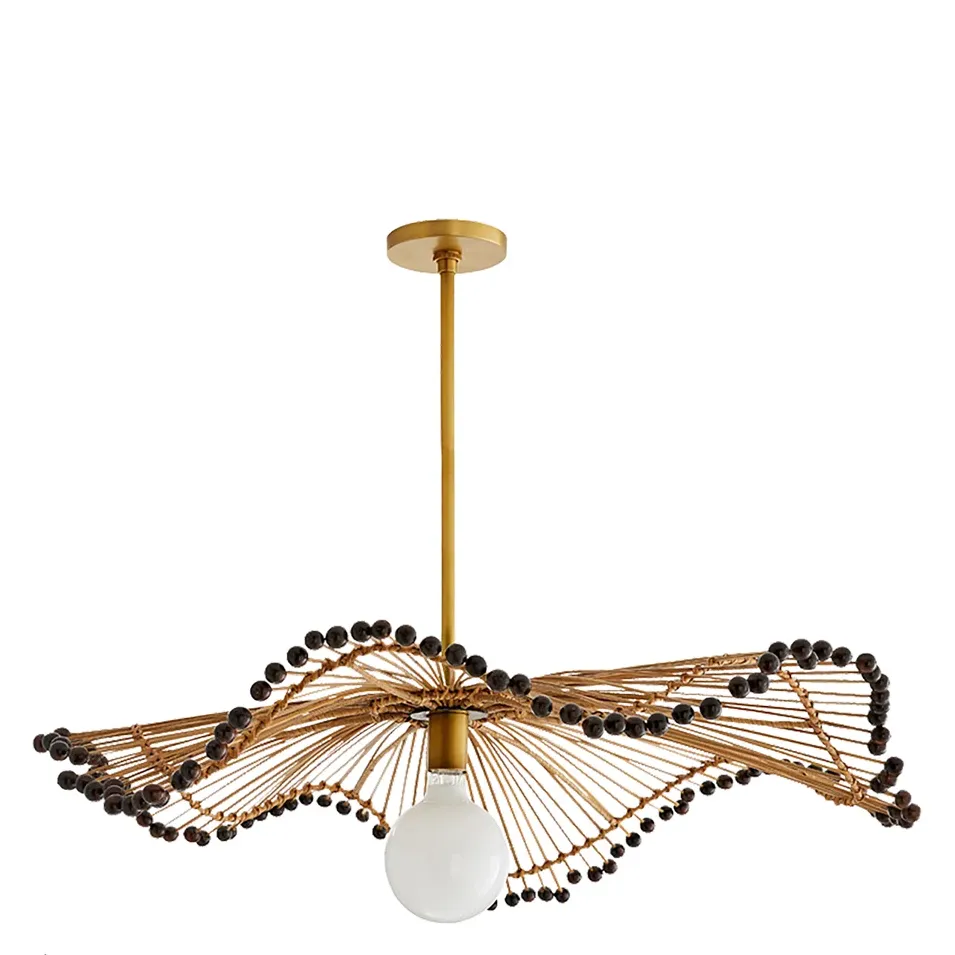
Wayfair
Sandyville 1-Light Pendant
For something completely different, a pendant light made from organic materials, like this wavy rattan and brass design, will bring interest, texture, and drama to your space.
3. Single-Use Dining Rooms
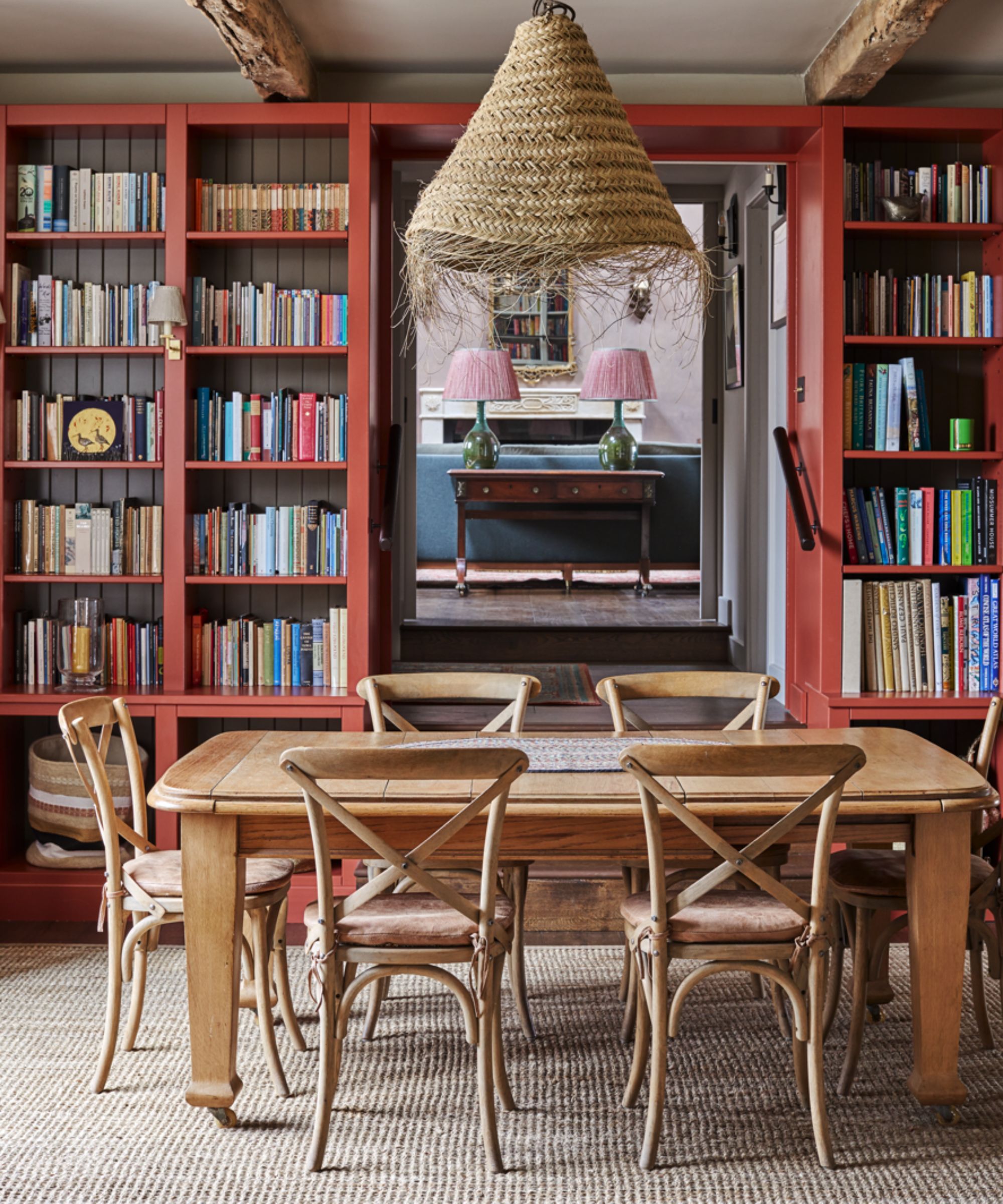
There’s something so inviting about a dining room home library hybrid. In this scheme, bookshelves have been painted red for a warmer atmosphere.
(Image credit: Future)
There’s a reason separate dining rooms fell out of style – most of us simply weren’t using them outside of one or two holiday meals. As such, they became dumping grounds and dust collectors, rather than the hub of the home we expected them to be. And it’s a cliché that designers say it’s time to give up on.
‘The single-use formal dining room is on its way out. Today’s dining spaces are evolving into multifunctional rooms that reflect how people actually live – not just where they eat a few times a year,’ says Sandy Baisley and Natasia Smith, co-founders of Re-Find.
It’s a bit like when fashion people say an expensive coat or luxury perfume shouldn’t be saved just for best, but worn and loved all the time. And your dining space should be approached in the same way – designed to be used every day and enjoyed. And multi-purpose is the way to do it.
‘We’re designing dining rooms that double as home libraries, lounges, or game rooms – places you want to spend time in. The key is comfort: plush chairs, layered lighting, and a mix of textures that invite you to linger long after the meal is over,’ they explain. Blending dining with these unexpected rooms creates a natural evolution – once you’ve finished eating, dining can flow into evening entertainment.
Introducing multiple functions to your dining room doesn’t require a full remodel. You can simply add some bookshelves, such as the Ashwood Road 5 Shelf Bookcase from Walmart or the Higgs Bottom Arch Cane Paneling Bookcase from Anthropologie, for book and game storage, or even add a casual seating area at one end of the room.
4. ‘Museum-Piece’ Designs
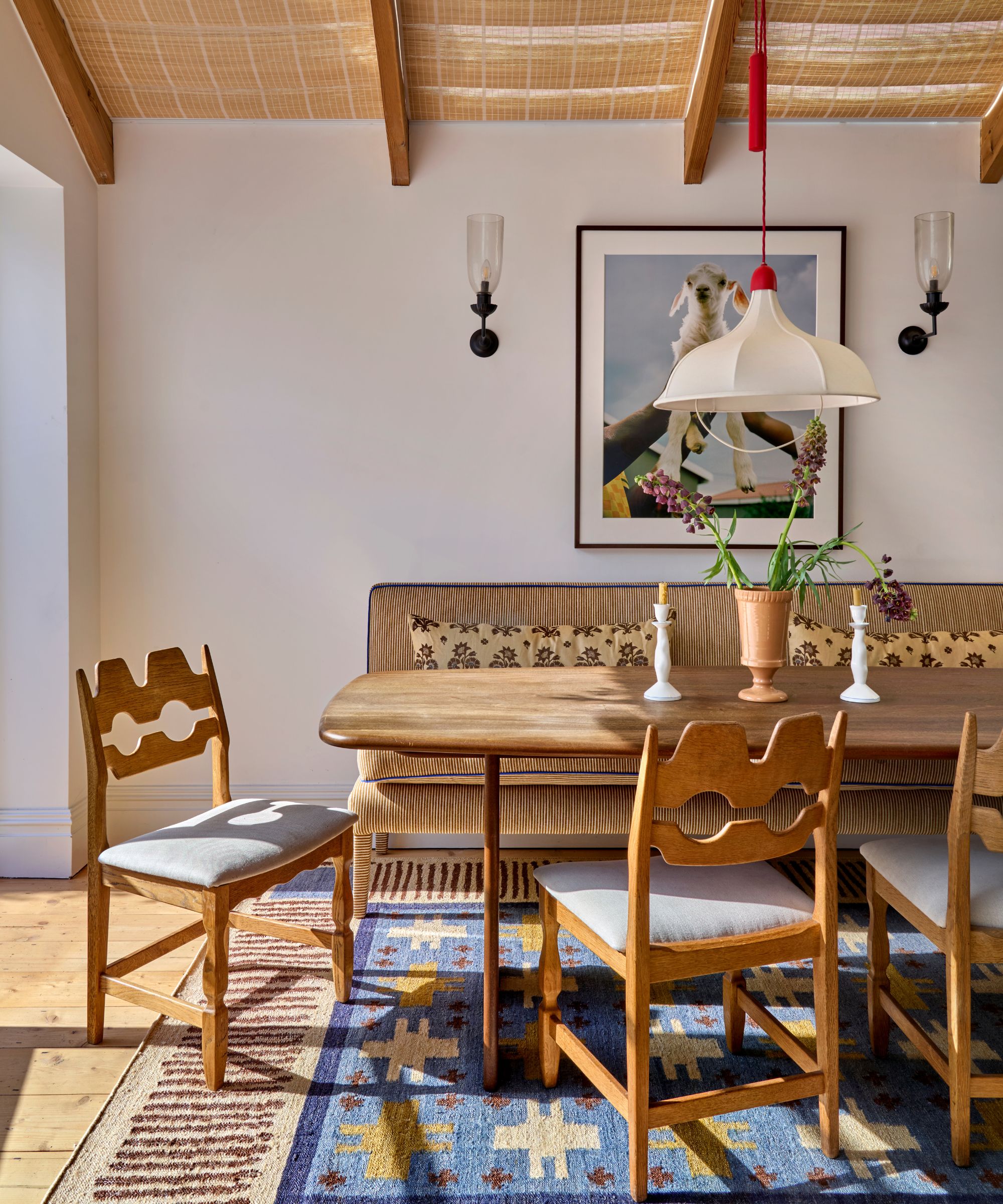
There are still plenty of beautiful design details in this space, from the chairs to the upholstery, but it still maintains that cozy, lived-in aesthetic.
(Image credit: Pelican House / Lucy Williams / Milo Brown)
In many ways, the dining room is the one space where people often default to what they think it should look like, rather than curating a space that feels like their own, is comfortable for family meals, and is filled with personal details. But it’s something designers say we should absolutely change as we head into 2026.
‘One trend we see fading is the overly formal, museum-piece dining room, the kind that’s used twice a year and feels stiff. Heavy matching furniture sets and generic builder lighting are losing steam because they don’t reflect how people live today,’ explains Rebekah Murphy, co-founder and principal designer at Murphy & Moore Design.
In essence, it’s become a cliché to fill your dining room with clichés, rather than designing a space that reflects your interior design style and the way you and your family would actually use the space. But it’s exactly how Rebekah says you should be approaching your dining room design.
‘Homeowners are embracing character-driven, lived-in elegance: dining rooms that feel collected, personal, and integrated with the rest of the home. We’re seeing historic architectural details, interesting color stories, statement lighting, and a mix of vintage pieces become central to the space,’ she explains.
‘Instead of perfection, people want patina, warmth, and rooms that invite conversation. A beautifully layered dining room with thoughtful millwork and sculptural lighting feels far more relevant for the way families gather now.’

McGee & Co.
Saxon Wall Sconce
Candle sconces are back in a big way, and this classic wrought iron design is a stylish way to get the look. Two hung either side of framed art creates a characterful look.
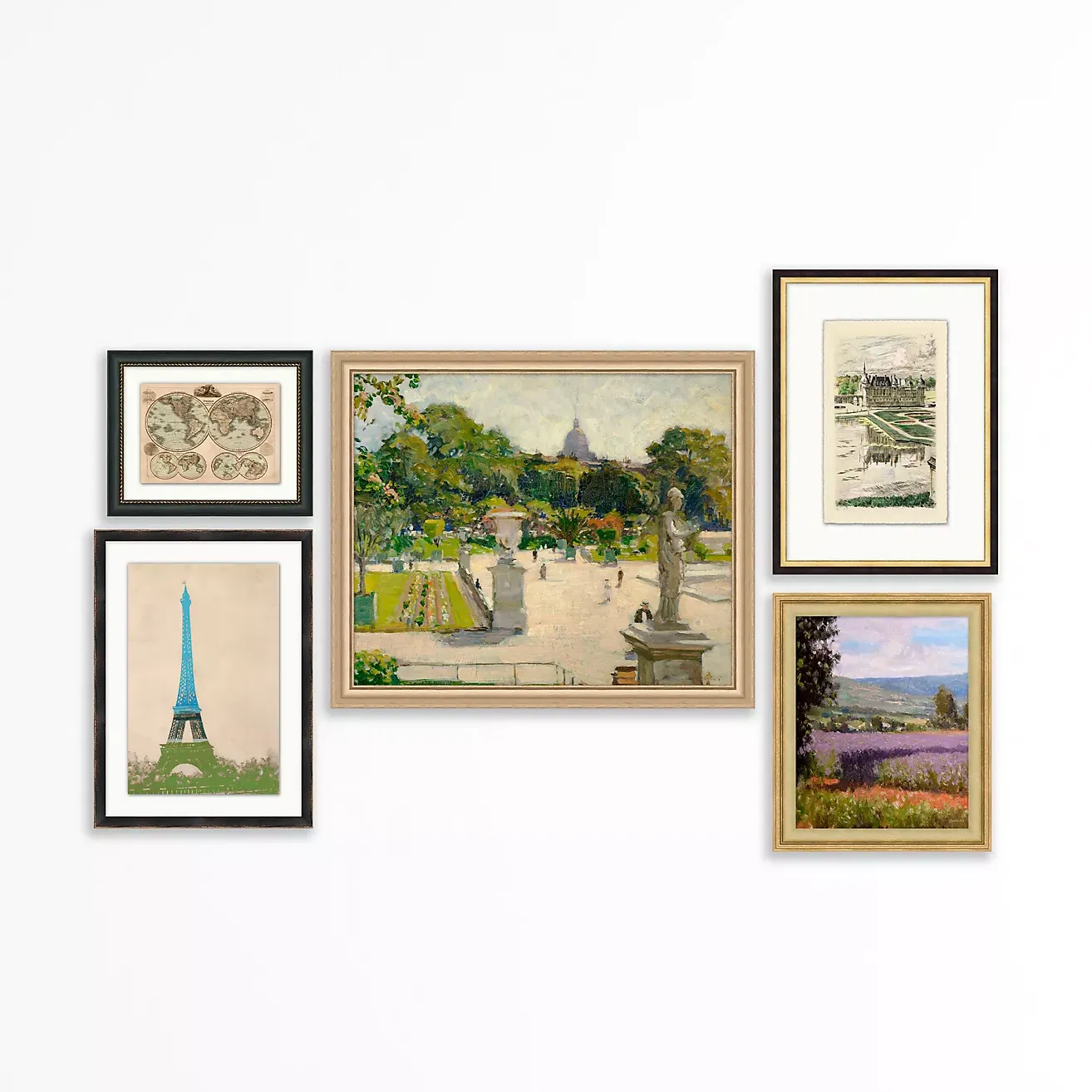
Anthropologie
Travel Gallery Wall Art
Dining room decor should showcase your personality, and what could be more personal than art that commemorates your travels, like this set of five paintings?
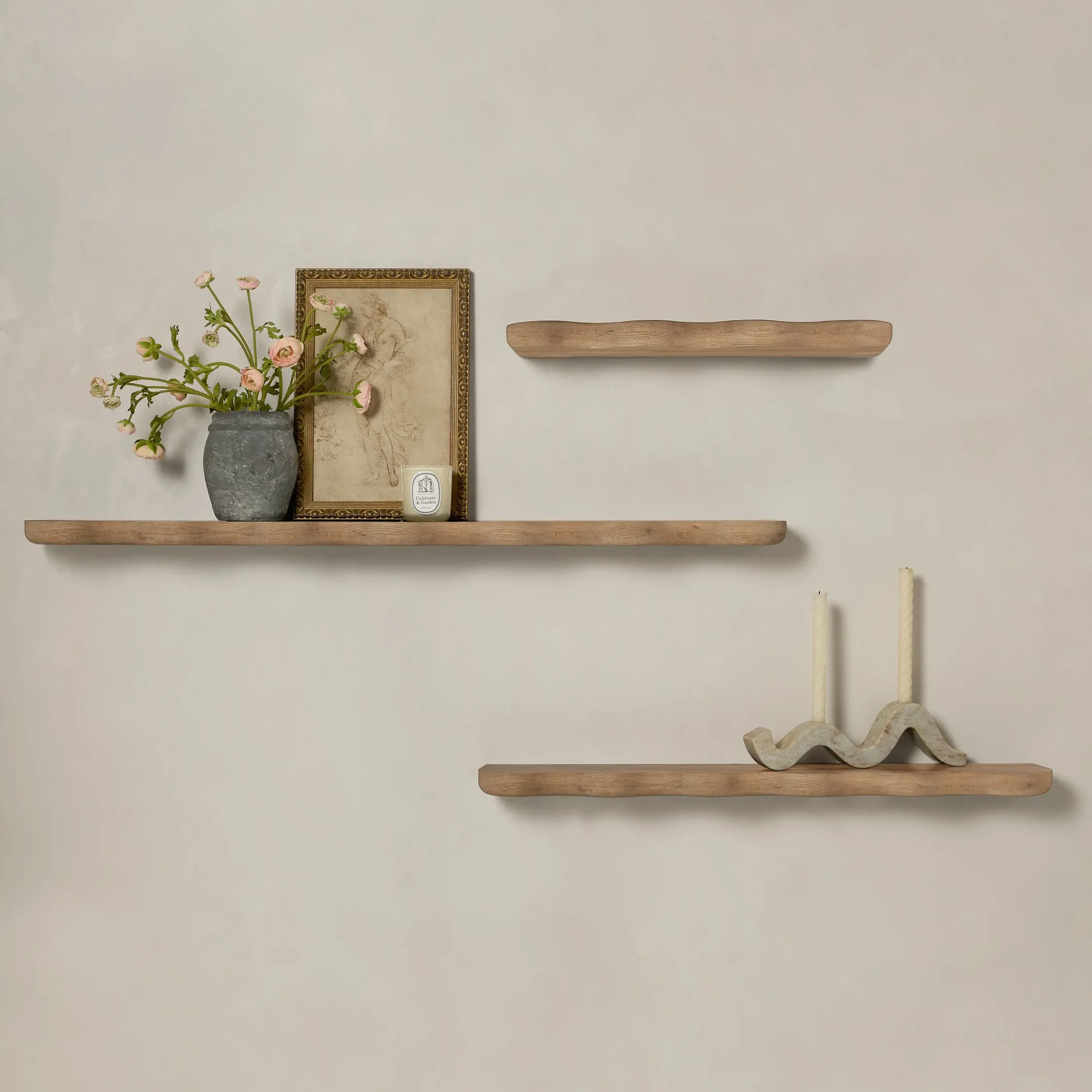
Lulu and Georgia
Cario Shelf
If you like to regularly switch up your dining room decor for the seasons, these waved-edge oak shelves are the perfect way to create dynamic, characterful displays.
5. Matching Dining Chair Sets

This dining nook proved that a mix of seating options feels infinitely more comfortable and curated than a standard matching set.
(Image credit: Kate Hartman Interiors/David Patterson)
It’s become very well-known that in a bedroom, you should never decorate with a full matching suite, where the wardrobes, drawers, and bedside tables are all the same. And this same ethos applies to the dining room – all-matching furniture lacks character and misses the cohesive mark.
‘Formal dining rooms with perfectly matched chair sets are falling out of favor,’ says Kate Hartman of Kate Hartman Interiors. ‘In their place, we’re seeing intimate, banquette-style nooks that feel softer, cozier, and far more conducive to lingering over long, elegant meals.’
A banquette is a chic choice in an open-plan space, but in more formal dining rooms, chairs are still a favored choice. In these instances, either introduce a different chair at each head of the table (this Halbrook Dining Chair Set of 2 by Sarah Sherman Samuel is perfect for this) or go for a fully mismatched look.
Shopping vintage is a great option for this look – your dining room will instantly feel collected and characterful, as long as you maintain a common thread for each chair, whether it’s the material they are made from or the upholstery color and pattern. Chairish has some brilliant examples, including this selection of 1950s Vintage Dining Chairs.
In short, dining rooms are supposed to be lived-in, characterful spaces, rather than the showroom designs you are so used to seeing. It’s about ditching the features you think you should introduce, replacing them with pieces you love, and adhering to your unique style. Remember, this is a room for spending quality time, not a time capsule of traditions passed.
The relationship with dining rooms has had its ups and downs. From formal spaces to casual kitchen dining, the trend now leans towards a blend of both styles.
As dining room ideas continue to evolve into more multi-functional spaces, there are certain design choices that are considered clichés and outdated.
While the dining room may not be the most frequently used area in the home, it still plays a significant role during hosting season and is often a room that guests see the most. This makes it essential for the space to be timeless yet trendy, functional yet aesthetically pleasing, relaxed yet ready for any occasion.
So, what dining room clichés should you avoid to keep your space looking fresh and modern in 2025 and beyond?
1. Banquettes in Formal Dining Rooms

In this dining room, vintage chairs have been styled around the table to maintain the formal look, while adding plenty of comfort.
(Image credit: Ellie Christopher)
Banquette seating has gained popularity for its comfort and storage benefits, but in a formal dining room, designers advise against it.
‘Banquettes in formal dining rooms are losing steam. They look great in photos but rarely work in real life, especially when guests are climbing in and out during a dinner party,’ says interior designer Ellie Christopher.
‘Fully upholstered dining chairs are making a comeback. They add softness, texture, and a sense of ease. I also love the idea of giving heirloom pieces a modern update: slipcovered dining chairs in linen or cotton instantly tone down the formality and feel fresh again,’ she explains.
Revamping an inherited or vintage chair can modernize antique furniture and give it a unique look tailored to your style and lifestyle. The choice of fabric is crucial.
‘For families, laminated or wipeable fabrics like leather keep things beautiful and livable. The goal now is a dining space that’s elegant but approachable – somewhere people actually want to linger.’
If you’re looking for a timeless and comfortable option, the Threshold™ Ingleside Open Back Upholstered Wood Frame Dining Chair from Target is a great choice. For a bolder look, Lulu and Georgia’s Haddan Slipcover Dining Arm Chair offers a range of fabric patterns and colors to choose from.
2. Oversized Chandeliers

For a more refreshed look, the designer has opted for a modern lighting fixture that feels somewhere between a pendant and a chandelier for a chicer look.
(Image credit: Audrey Scheck Designs)
In the past, formal dining rooms often featured oversized chandeliers that added a sense of grandeur and formality. However, this trend is now on the decline.
‘Large and heavy chandeliers are on their way out for dining rooms. The days of having a chandelier with dripping crystals to create a very formal look in a dining room aren’t what people are looking for now,’ says Yena Jung, of By Yena Designs.
A more modern and contemporary lighting fixture can bring a fresh and stylish touch to the space. The Curie Polished Champagne Chandelier from CB2 is a great example of a modern chandelier, or for a softer look, Bruck Lighting’s Federica Pendant from Wayfair is a chic option.
‘Many formal dining rooms are being transformed into new spaces like playrooms or laundry rooms, but more commonly, dining rooms are being integrated with semi-open concept kitchens. In such spaces, having both statement kitchen pendant lights and a heavy dining room chandelier can be overwhelming,’ she explains.
Instead of sticking to traditional oversized designs, Yena suggests opting for more unique and artistic chandeliers that are asymmetrical and colorful. This shift in design can elevate the dining space and make it feel more modern and less outdated.
‘I’m using more artistic chandeliers that are asymmetrical and odd-shaped. I’ve also been adding color to the light fixtures, where traditionally you only ever saw glass, black, white, silver, and gold.’
Light fixtures add warmth to a room, but using a fixture in a dark mulberry color or aged bronze adds another dimension and makes it more interesting to look at than too many hanging crystals. “Matching heavy furniture sets and generic builder lighting are no longer in style because they don’t represent modern living,” explains Rebekah Murphy, co-founder and principal designer at Murphy & Moore Design. According to her, it has become cliché to fill a dining room with generic items instead of designing a space that reflects personal interior design style and how the space is actually used. Rebekah suggests approaching dining room design by embracing character-driven, lived-in elegance. This includes incorporating historic architectural details, interesting color stories, statement lighting, and a mix of vintage pieces to create a space that feels collected, personal, and integrated with the rest of the home.
Instead of aiming for perfection, Rebekah recommends focusing on creating a dining room with patina, warmth, and a welcoming atmosphere that encourages conversation. A beautifully layered dining room with thoughtful millwork and sculptural lighting is more relevant for how families gather now.
In terms of furniture choices, it’s becoming more popular to move away from heavy matching sets and opt for pieces that showcase personal style. For example, banquette-style nooks are gaining popularity for their cozy and intimate feel. When it comes to dining chairs, mixing and matching different styles is preferred over perfectly matched sets. Introducing vintage pieces can add character and charm to the dining room, as long as there is a common thread that ties them together.
Overall, the trend in dining room design is to create spaces that are lived-in, characterful, and reflective of personal style, rather than conforming to traditional showroom designs. It’s about curating a space that is inviting and comfortable for spending quality time with loved ones. Please provide a sentence or passage for me to rewrite. Please rewrite this sentence. rewrite the content Please provide more context or specific information to be rewritten.
